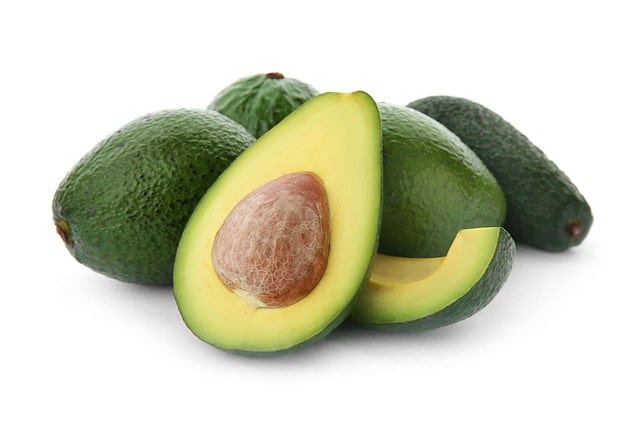Can You Eat an Unripe Avocado?
Avocados have skyrocketed in popularity over the years due to their versatility in various dishes, particularly the ubiquitous avocado toast. But what if you find yourself faced with an unripe avocado? Is it safe to eat, and what are the potential risks or benefits? Let’s delve into the topic of unripe avocados and explore whether it’s advisable to consume them.
What Defines an Unripe Avocado?
Avocados, known for their creamy texture and unique nutty flavor, undergo a ripening process after being harvested. An unripe avocado typically feels firm to the touch and has a vibrant green color. While some recipes call for ripe avocados due to their softer texture and richer taste, unripe avocados have their own set of characteristics and culinary applications.
Physical Characteristics of Unripe Avocados
- Firm texture
- Vibrant green skin
- Lacks the creaminess of a ripe avocado
- Bitter or astringent taste
- Resistant to gentle pressure
Understanding Avocado Ripening
Before we answer the question of whether you can eat an unripe avocado, let’s understand the ripening process of avocados. Avocados are unique in how they ripen compared to other fruits. Unlike bananas or apples, avocados do not ripen on the tree. Instead, they mature and ripen after harvesting. This is why you often find avocados at different stages of ripeness at the grocery store.
The ripening of avocados is mainly governed by the storage conditions and time. When stored at room temperature, avocados typically ripen within a few days to a week. The process of ripening involves the fruit softening, the darkening of the skin, and the development of the characteristic buttery texture and nutty flavor.
Signs of Ripeness
Knowing when an avocado is ripe is essential for enjoying it at its best. While unripe avocados are hard and lack flavor, a ripe avocado yields to gentle pressure and has a creamy texture. Key indicators of a ripe avocado include a slightly soft feel when squeezed (but not mushy), a dark green or purplish color under the stem, and the ease with which the stem detaches when flicked off.
Conversely, an unripe avocado feels firm and unyielding to pressure. The skin is often bright green or light green without any give when gently squeezed. In some cases, avocados may appear unripe even though they are at an edible stage. This often happens with varieties like the Fuerte avocado, which retains its green skin even when ripe
Can You Eat Unripe Avocado?
Now, let’s address the burning question: can you eat an unripe avocado? The simple answer is that it is generally safe to consume unripe avocados, but there are considerations to keep in mind.
Taste and Texture
The primary reason why most people prefer not to eat unripe avocados is their taste and texture. Unripe avocados are notably firm and have a mild or lacking flavor compared to ripe avocados. The creamy texture and rich taste associated with ripe avocados are absent in unripe fruit, leading to a less enjoyable eating experience.
Health Concerns
From a health perspective, there are no significant dangers in consuming unripe avocados. The fruit is not toxic when unripe, unlike certain fruits that can be harmful if eaten prematurely. However, some individuals may experience digestive issues or an upset stomach after eating unripe avocados due to the high starch content and lower monounsaturated fat levels compared to ripe ones.
Nutritional Content
While unripe avocados may lack the optimal taste and texture, they still offer some nutritional benefits. Avocados are packed with essential nutrients, including vitamins, minerals, and healthy fats. Even when unripe, avocados contain fiber, potassium, and vitamins C, E, and K. Therefore, if you find yourself with an unripe avocado and are pressed for options, incorporating it in recipes or dishes where it can be cooked or blended might be a better approach.
Cooking with Unripe Avocados
Cooking with unripe avocados is a creative way to salvage the fruit and experiment with new flavors and dishes. Unripe avocados can be thinly sliced, diced, or mashed and used in salads, smoothies, dips, or even as a topping for certain meals. Frying or sautéing unripe avocados can also help soften their texture and enhance their taste, making them more palatable.
Storage and Ripening Tips
If you find yourself with unripe avocados and want to hasten the ripening process, there are several tricks you can try. Placing unripe avocados in a paper bag with a banana or apple can expedite ripening due to the ethylene gas these fruits produce. Storing avocados at room temperature and keeping them out of the fridge until ripe is also key to ensuring they ripen evenly and develop the desired creamy texture.
Potential Risks of Eating Unripe Avocados
- Bitter taste and unpleasant texture
- Indigestibility due to high fiber content
- Potential stomach discomfort or bloating
While these risks are not severe, they might deter individuals from consuming unripe avocados raw. However, cooking or processing unripe avocados can mitigate some of these risks and transform their flavor and texture.
Cooking Methods to Make Unripe Avocados Palatable
- Grilling or baking unripe avocado halves with spices
- Sautéing diced unripe avocados with other vegetables
- Pureeing unripe avocado to create creamy sauces
By applying different cooking methods, unripe avocados can be rendered palatable and incorporated into nutritious meals.
Conclusion
In conclusion, while ripe avocados are preferred for their taste and texture, eating an unripe avocado is generally safe and poses no significant health risks. However, the eating experience may not be as enjoyable due to the firm texture and mild flavor. If you find yourself with an unripe avocado, consider incorporating it into cooked dishes, smoothies, or recipes that can soften its texture and enhance its taste. Remember to pay attention to the signs of ripeness and storage tips to enjoy perfectly ripe avocados in the future.
Next time you face the dilemma of choosing between waiting for an avocado to ripen or digging into an unripe one, consider experimenting with different preparations and cooking methods to make the most of this nutritious and versatile fruit. Whether ripe or unripe, avocados offer a multitude of culinary possibilities, so don’t be afraid to get creative in the kitchen and explore new ways to enjoy this beloved superfood.
Would you like to learn more about other fruits and their ripening processes, or do you have any other questions or topics you’d like to explore further? Let me know!

